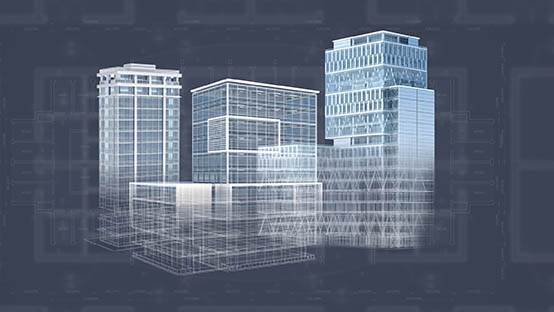Design-Bid-Build Versus Design-Build.
From the pyramids to Renaissance cathedrals to the Industrial Revolution, we’ve seen a progression of how work was organized to create long-lasting feats of design, architecture and engineering. But as technology became more complex, professions became more specialized, society became more advanced, and governments introduced more rules, clear delivery methodologies were required to define roles, relationships and responsibilities with a clear sequence of events. As a result, two main project delivery methods are used today, Design-Bid-Build and Design-Build.
Design-Bid-Build
The most traditional method is where the owner contracts a designer and builder separately. Project phases are defined and happen linearly. The designer works in isolation to deliver the construction documents, and the owner gets bids from contractors to perform the scope of work. At this point, actual costs are determined, and the owner discovers whether the design is truly buildable and cost-effective. Redesign and rebid might be required at this stage. Construction occurs once the bids are approved. Often the bidding process creates a competitive environment where construction firms might enter low-cost bids to get the job, but if those bids weren’t realistic, the redesign could also be required at this stage. It naturally creates an environment where project teams work in silos.
Learn about Design-Bid-Build here
Design-Build
This is a process where design and builders work together, and project phases occur concurrently. Collaboration and communication start early between architects, engineers, trades and construction. They work together to define the design, budget, bid and construction. Any obstacles are addressed before work starts, and planning for material costs and availability, mechanical system complexities, market fluctuations and coordination logistics are considered upfront.
Learn about Design-Build here

Pros & Cons
Design-Bid-Build Pros:
- More architect involvement – with sole responsibility to design, likely get a high-quality design
- Competitive bids – contractors competing to get the job
- Distinct Roles – between design and construction
Design-Bid-Build Cons:
- Extended timelines – the bidding step is a linear process and adds an extra step
- Late to define budget – if bids are over budget, the owner pays for redesigns and delays
- Team conflict – with teams working in silos, there can be breakdowns in communication and collaboration
- Lack of product & logistics insight – architects lack insight into product availability, market changes and coordination realities
- More change orders – if any mistakes were made in design or if variations are required to build in reality, delaying schedules and increasing costs
Design-Build Pros:
- Faster timeline – upfront planning, avoiding the bid process, and less rework
- Reliable budget – costs related to design and materials are considered upfront
- Quality work – the contractor is chosen based on their reputation and quality, not the lowest bid
- Streamlined communication – designers and builders work together at all stages of the project
Design-Build Cons:
- No competitive bids – projects aren’t awarded based on the lowest bid
- Locked-in contract – you’re committed to your providers, meaning you need a high level of trust in your teams
True Mechanical approach
It’s no secret where we stand. With over 500 projects and one million square metres of construction, we can say based on sound experience that the Design-Build method delivers the best results. However, when we’re brought into a Design Bid Build project, we use our True Constructable approach and experienced team to bring predictability, speed, and experience to your job site. So wherever you are in the process, give us a call. We’d love to help.
“Design-Build projects resulted in 102% faster delivery speed and a 6% reduction in change orders.”
— The Construction Institute









